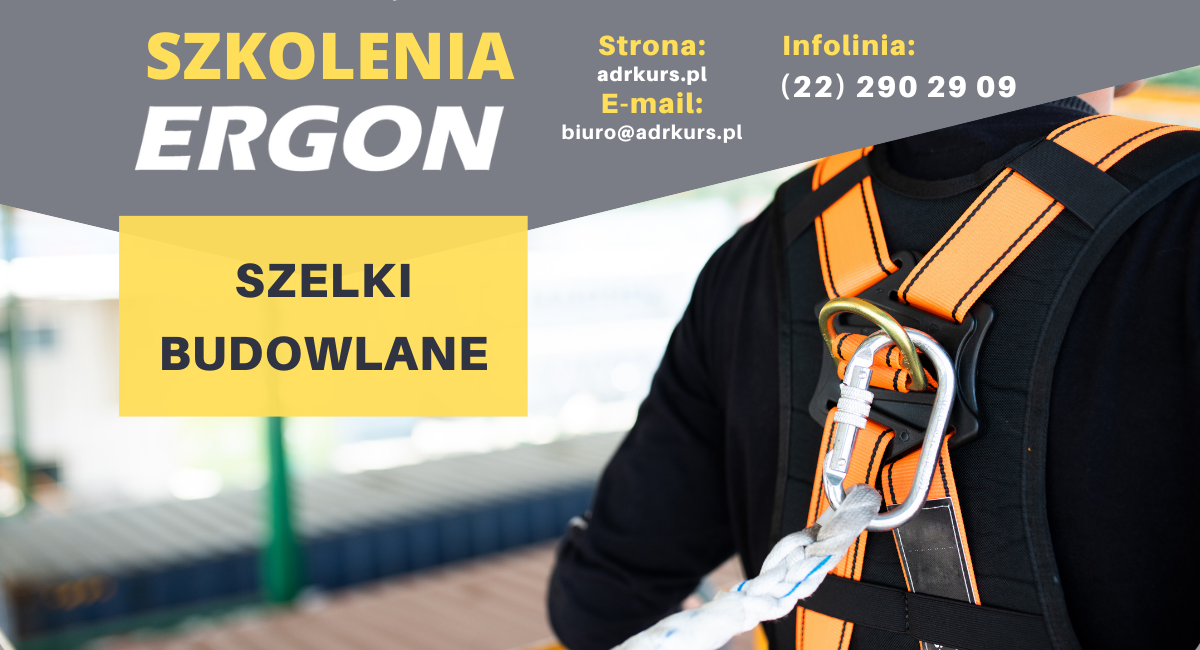Construction harness course

Work in the construction of houses, office buildings and the renovation of townhouses that takes place at height is extremely dangerous. Every year, as a result of negligence in the area of guaranteeing safe working conditions on construction sites, dozens of people die as a result of falls from height. The cause is invariably the inadequate use or lack of collective protection equipment, individual protection, lack of supervision and inadequate health and safety training. It is the employer's responsibility to organise these. The employee should be referred for a height survey and have health and safety training. Non-mandatory but extremely useful is general fall protection training, so to work safely at height, every person should take it.
Training - Fall protection
Fall protection training courses (at the same time a harness course) are primarily aimed at construction workers who perform work at height. However, such a course should also be taken by, among others, advertising installers, stuntmen, telecom and power line maintainers, lifeguards or window cleaners at height. During the course, the worker will learn about the following topics:

- health and safety rules,
- construction and adjustment of the safety harness,
- the use of the harness in accordance with the instructions and its methodology,
- individual and group belaying on horizontal and vertical structures,
- correct selection of personal protective equipment,
- rescue techniques,
- basic legislation,
- safely carrying out work at heights,
- characteristics of work at height,
Training consists of a theoretical part and a practical part (often at a location designated by the client).
Individual and collective protection at work at heights
According to the Ordinance on Health and Safety at Work Regulations, work at height is classified as particularly hazardous. It is the employer's responsibility to organise appropriate training for his employees, who should additionally be provided with both collective and individual protection measures. Collective protection measures mainly include:
- Balustrades - They consist of a kerb plank (0.15 m high) and a guardrail positioned at 1.1 m height. The space between the board and the handrail shall be filled in such a way as to protect workers from falling.
- Safety nets - They are manufactured from polypropylene or polyester and have a boundary rope by which the net is attached to the structure. We distinguish between horizontal nets (e.g. used for work on hall structures) and vertical nets (edge protection).

If we are talking about self-protection on a construction site, these are things worn or held by a worker to protect him or herself from a hazard. These items should be selected for the hazard that may occur, minimise the discomfort associated with their use, fit snugly and be used in accordance with instructions. Such items include safety harness (a.k.a. harnesses). Safety harnesses are used to stop a fall from height. They have points (one or two) that are used to attach a shock-absorbing system. The first is located on the back and the second near the sternum. The harnesses have strong attachment buckles, straps that are adjustable and attached to the chest and thighs. They are made of textile webbing, connected to each other by stitching and metal connecting elements so that they embrace the wearer's body. During a fall, the primary task of harnesses is to distribute the forces acting on the human body and optimise the position during the fall. They also give the body the correct position when arresting a fall and enable the wearer to wait safely and as comfortably as possible for help.
Our Courses
In our fall protection training courses, you will also learn about the principles of belaying, the requirements of EN 363 and post-accident measures. Participants must be at least 18 years of age, have a current test, at least a primary school education and be in good mental and physical condition. Fall protection training:
| Type of training: | Basic | Extended first degree | Extended Level II | Reminiscent of |
| For whom: | For workers performing work on various objects at height (e.g. roofs). | For people who perform rescue functions and work on structures, roofs. | For workers on roofs, structures and those who act as lifeguards, as well as those who compile records and supervise workers. | For workers who have undergone fall protection training and are now aiming to be reminded or to consolidate their knowledge of working safely at height. |
Centre for Staff Training ERGON provides fall protection courses to a very high standard. We have many years of experience in the market, and our teaching methods are state-of-the-art and will certainly allow us to convey the information to the trainees effectively. Feel free to contact us and we will provide you with all the necessary information. We provide affordable prices, which we always agree with you individually. We offer discounts for larger, organised groups. Our head office is in Warsaw, but we also operate in other cities.
We also encourage you to take a look at the wide range of training courses we have on offer. Among other things, we offer initial and periodic training in occupational health and safety, first aid training, fire safety courses, as well as many courses for which you need to UDT authorisations or TDT (for example, forklift operator or mast platform operator).





































